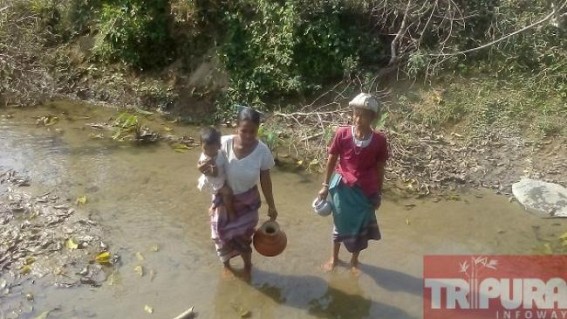TIWN

UDAIPUR, Dec 24 (TIWN): Dry spell hits Najilachara village under Udaipur sub-division over past few days. The village is standing at its worst with water crisis and rising water borne diseases.
One the one hand where the ministers claims that they have brought development in the in the rural areas of the state, village like najilachjara shows the reality.
In this age of golden era, clean, safe drinking water is still a scarce. Most of the tribal hamlets including the areas under Udaipur sub division are still facing the crisis of water. The people of the area are suffering from a massive shortage of water with the beginning of the dry spell.
As there is immense crisis of drinking water the villagers are bound to drink water small brooks, and nearby polluted rivers, and streams, small fountains and other minor water bodies that consist of major pollutants which is highly responsible for water borne diseases.
The area is facing an acute crisis of water for last many days. The people of this area walk a few kilometers in search of water under the scorching sun every day. Especially, the woman of this village carries 4 to 5 heavy pots over their head and fetches water from the wells and the brooks.
As water supply from the public water tap is unpredictable, the women are witnessed waiting in long queue for collecting water from the public water tap. Sometimes water pressure dips so low that they return with an empty bucket.
Reportedly, scarcity of water has bound them to drink contaminated water from the small stream and brooks.
Eruption of water borne disease and diarrhea are most common during dry spell in remote tribal localities
The areas are mostly tribal dominated. The villagers, mostly from indigenous origin, manage their stock of drinking water by digging holes inside the hilly craters, allowing spaces to be filled with the dripping water. However this has now given birth to the water borne diseases with most of the tribal people suffering from diarrhea, malaria and other water borne diseases.
- Cooperative Bank’s controversial venue : Tripura youth died in Bus Accident in Assam, many injured
- Sales Representative Union demands at least Rs. 3,000 pension
- 2 injured after hit by Tipper Truck in Jirania
- Marijuana found with Bikers: Belonia Police arrested Two !
- CITU observed International Labours Day



